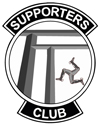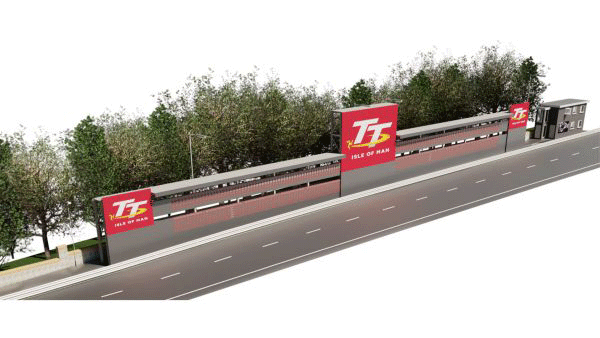|
MIKE HAMMONDS TT BLOG PAGES TT 2022 PREVIEW TT 2022......The Hiatus is Over In the immortal words of the late Murray Walker TT 2022 will be Go Go Go in just a few weeks time. A Covid induced hiatus of two weeks under three years will be over and bikes will once again be racing over the Mountain Course. During the interim years the TT organisers have been busy reviewing all aspects of racing over the Mountain Course and have introduced a new Safety Management System, more details below. The headline news is that there will be live visual coverage of the races on a pay for view basis. The TT+ Live Pass will be available for a one-off payment of £14.99, which will give you access to every qualifying session and race at TT 2022, as well as all the insight and analysis that goes with it. For fans not able to go to the TT this will be a major breakthrough in being able to see the practice and race sessions, there will be a small time delay incase of a serious incident. A major difference at this year's TT will be absence of the main scoreboard opposite the Grandstand, apparently a temporary scoreboard will be in place for this year's TT. Rob Callister who has responsibility for Tourism and Motorsport said that a replacement scoreboard wouldn't be in place because the Treasury said that the business case for the new structure wasn't strong enough!! The proposals have been resubmitted for this year's budget. In truth the scoreboard has been in need of repair or replacement for a number of years. The business case should have been approved long ago and plans should have been in place to replace the existing structure between TT's. The latest image of the new scoreboard is in keeping with that of the old.
Being a traditionalist and having worked on the 'Clocks' as a boy scout (5th Douglas) I would have preferred a direct replacement and mantainted the old traditions. However, the scouts performing the 'Tear Off' function are only protected from 160mph+ missiles by a wire fence which isn't acceptable in this day and age. Although absolutely necessary the fence ruined photograph opportunities.
Safety Management System The biggest change in terms of the organisation of the TT and subsequently the MGP is the new Safety Management System. As with all change there has been a lot of comment, good and bad. The organisers view is that the changes will ensure the future of the TT and the MGP; time will tell. A Chief Sector Marshal was sacked by Gary Thompson, Clerk of the Course, after heavily criticising the changes to the MGP. on social media. For SMS to be successful, ACU Events who run the TT, expect all senior officials to be onboard with the changes. A concern, and an unknown, is any fallout from sacking a CSM by other marshals by not signing on for the TT. The following has been copied from IOMTTRaces.com: The new Safety Management System has brought about a raft of changes; some you’ll see and some you won’t. The aim of all of them is to reduce the risk of an accident. The scope of this work is both far-reaching and never-ending, but here’s a neat overview of the most noticeable features and their benefits that are already on their way. Taking the lead on the SMS is Nige Crennell. Nige is a Manxman born and bred, but more important than his roots, is where they spread. Nige enjoyed a full career in the RAF as a Tornado pilot, later becoming a weapons instructor and instructor pilot, which means his working life was full of systems and checks. Unsurprisingly, a significant amount of scrutiny and responsibility is required to deal with the kind of speed and danger that Nige faced every day. It’s easy to see why he’s a natural fit. Nige’s ‘wingman’ for the SMS is Doctor Gareth Davies. Until very recently, Gareth ran the London Air Ambulance Service. Operating in the capital also meant leading teams in the response to London’s major incidents: The Paddington, Southall and Potters Bar rail disasters; the 7/7 bombings; and the terrorist attacks at Westminster and London Bridge. Gareth also happens to be the medical lead when it comes to the TT and has championed using helicopters to take the ‘operating theatre’ to injured racers at the side of the road, rather than simply using them as sky ambulances that ferry them to Noble’s Hospital. He’s another Manxman who moved away from his island home to gain a new set of incredible skills – skills that have saved the lives of countless people. There are other members of the team that all play a vital role in the SMS process, but I allow Nige to kick off the story over a welcome coffee. “Everyone has heard of risk assessments, but I wanted to understand how ours were put together and who was looking at them once they had been created. I set out to proactively look for as many problems as I could - I wanted to identify all the things that could bite us in the arse! Once I understood them, I then applied the same systematic approach to dealing with those risks as I did in my previous career. It’s more than just a box-ticking exercise and it has to be if we want the TT to grow, let alone survive.” Dr Gareth Davies: “By creating the SMS, we’re looking to identify the hazards that are out there, and with proactive actions, our collective aim is to reduce the level of risk that is associated with those hazards to make it acceptable to keep the TT alive. We will do all we can for TT2022, but this is a process of continual improvement and we then keep going after TT2022 to learn more lessons and keep improving.” “For the TT to be sustainable in the long term we have to be able to manage effectively the risks associated with the event and protect against reputational damage. This isn’t about making sure that everyone is wearing the right kind of hi-vis jacket. It’s about clearly defining roles and responsibilities. We want to be confident that everyone involved is doing their job to the best of their ability and has all of the tools and training required to do so. That’s when we can be truly confident in letting the guys and girls go out and race on the Mountain Course.” “It’s been an incredible process and one I’m proud to be part of. There’ll be some mourning for some of the more outdated and makeshift elements of the TT, but you can’t apply professional excellence without making changes – and that’s the business we’re in. There’ll be a new generation of TT fan who will embrace what we’re doing and will support it wholeheartedly. I’ll be proud to hand over this new version of the TT to the next custodians, which is all we are.” The SMS has looked at all aspects of the organisation, the main bullet points are detailed below: ORGANISATIONAL STRUCTURE
COURSE OVERSIGHT
MARSHALLING THE MOUNTAIN
EQUIPMENT FOR MARSHALS AND MEDICS
ACCIDENT RESPONSE
ACCIDENT INVESTIGATION
RIDER PPE (PROTECTIVE PERSONAL EQUIPMENT)
RACE REGULATIONS
ON-SITE CARE
RIDER WELFARE
PIT-LANE OPERATION
PADDOCK INFRASTRUCTURE
The review has certainly been thorough and has left no stone unturned. The TTSC used to provide a riders 'Chill Out Zone' during practices and races with the 'Ladies Haven' which offered tea, coffee and refreshments to the riders and their family and team. Everything goes full circle.
A concern for me is the reduction in the grid size with a maximum of 50 in the Superbike Class. I would have thought starting the seeded riders, 1 - 20, individually and then numbers 21 - 70 in pairs would not have compromised safety on the track. I realise that extending the size of the pit would impinge on the size of the pitlane but that could have been extended. The possible lack of bikes on the course during qualifying could also be an issue in maintaining spectator interest. This could have a long term effect on spectators coming to the Island during practice week.
I wonder why 'practice' has been superseded by 'qualifying'? Given that the SMS is all about risk assessment and safety, surely changing 'practice' to 'qualifying' puts pressure on riders to achieve a time everytime they go out. Likewise live coverage of qualifying also puts an additional pressure on the rider but this is a step forward in promoting the TT. This is where the issues become blurred, the balance between safety and the commercial interests of the event
The changes to the MGP have been even more drastic with the race programme reduced to just three races, Senior, Junior and Lightweight. The Classic TT has been scrapped and now there will be a Senior Classic MGP Race and a Superbike Classic MGP Race. The whole meeting will take place over just nine days from Sunday 21st August. The Newcomers Race has also been scrapped with this explanation: 'Riders taking on the challenge of the Mountain Course for the first time are introduced to the racing programme in the safest manner possible and to align with the approach taken for the TT'. I can imagine that there will be quite a few riders who will be bitterly disappointed with this decision.
The comments and views expressed above are mine and do not reflect the views of the TTSC committee.
Mike Hammonds
|


